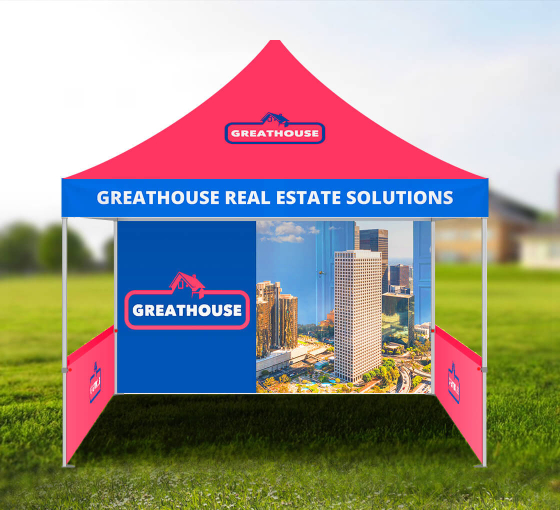Where every detail matters, signage is a silent yet powerful ambassador for your brand. It’s more than a mere display; it’s a magnet for customers, pulling them in with its messages. Signage is the voice of your brand, expressing its identity and values to all who pass by. Discovering the art of selecting the perfect signage for your business is essential. The art and science of selecting the perfect signage for your business covers everything from defining objectives to choosing design and materials. This exploration will guide you through understanding your objectives and selecting the right design and materials for your ideal signage. Come along on this journey with us as we explore the power of signage for promoting your company.
The Importance of Business Signage
In today’s hyper-connected world, physical storefronts are vital hubs for community engagement. Despite the prevalence of online shopping, in-store advertising remains indispensable. Your business signage serves as the face of your establishment, communicating its identity, values, and offerings to passersby. It cultivates brand recognition and loyalty, creating memorable experiences for customers. Effective signage not only attracts foot traffic but also reinforces your brand’s presence in the local market, contributing to long-term success and growth.
Choose the Right Signage for Your Business
Follow these steps to ensure that your signage not only enhances your brand image but also resonates with your target audience:
Step 1: Define Your Objectives
Before diving into the world of signage, take a moment to define your objectives clearly. Are you looking to attract new customers, promote specific products or services, or simply enhance brand visibility? By clarifying your goals above the front, you’ll have a clear roadmap for selecting the right signage solutions to meet your needs. Enhance your business sign with a clear message that reflects your objectives.
Step 2: Set a Budget
Budgeting is a crucial aspect of any signage project. Determine how much you’re willing to invest in your signage efforts, keeping in mind factors such as size, materials, and installation costs. Remember, quality signage is an investment in your brand’s reputation and longevity, so allocate your budget wisely. Consider outdoor signs for business that fit within your budget while maximizing impact.
Step 3: Research Signage Companies
With your objectives and budget in mind, it’s time to research signage companies that can bring your vision to life. Look for reputable companies with experience in creating custom signage for businesses like yours. Whether you choose a large-scale provider or a local artisan, make sure they understand your brand identity and can deliver high-quality, eye-catching signage. Choose a company that specializes in window decals for business to create captivating displays.

Step 4: Know Your Audience and Market to Them
Understanding your target audience is key to creating effective signage. Consider the demographics of your customers and customize your signage designs to appeal to their preferences and interests. Whether you’re targeting a younger, tech-savvy crowd or a more traditional demographic, your signage should resonate with your audience and draw them in. Craft restaurant signs that speak directly to your target demographic’s tastes and preferences.
Step 5: Choose the Right Design
Design is where art meets branding, and it plays a critical role in the effectiveness of your signage. Whether you opt for a sleek and modern aesthetic or a classic and timeless design, make sure it aligns with your brand identity and messaging. Keep it simple, yet impactful, and focus on conveying your message clearly and concisely. Ensure your no restroom sign is designed in a way that is easily recognizable and compliant with regulatory standards.
Step 6: Select the Appropriate Materials
The materials you choose for your signage can make a big difference in its durability and visual appeal. Consider factors such as weather resistance, longevity, and maintenance requirements when selecting materials. From aluminum (HIP reflective) to Corflute, there are countless options to choose from, so pick the ones that best suit your needs and budget. Opt for materials that are both durable and visually appealing for your restaurant signs.
Step 7: Keep It Simple
When it comes to signage, less is often more. Avoid cluttering your signs with too much text or imagery, as this can overwhelm viewers and dilute your message. Instead, focus on conveying your key information clearly and effectively, using clean and easy-to-read fonts and minimalistic design elements. Ensure your outdoor signs for business are straightforward to understand.
Step 8: Ensure Compliance with Regulatory Requirements
Before installing your signage, make sure you’re in compliance with any relevant regulatory requirements. This includes zoning regulations, building codes, and signage ordinances. By adhering to these rules and regulations, you can avoid potential fines and ensure the safety and well-being of your customers and employees. Ensure that your business sign meets all necessary regulatory standards.
Step 9: Evaluate and Iterate
Once your signage is in place, take the time to evaluate its effectiveness and gather feedback from customers and stakeholders. Monitor metrics such as foot traffic, sales, and brand awareness to assess the impact of your signage on your business. Use this feedback to make any necessary adjustments or improvements to your signage strategy. Iterate on your signage designs based on customer feedback and market trends to continually improve their effectiveness.
Adding Depth to Your Signage Strategy
While the steps outlined above provide a solid framework for creating effective signage, it’s essential to go beyond the basics and explore additional strategies for maximizing the impact of your signage efforts. Consider the following tips to add depth to your signage strategy:
| Strategies | Description |
| Interactive Elements | Incorporate QR codes or augmented reality experiences to engage customers and offer valuable information or entertainment. |
| Localized Messaging | Create signage messaging to reflect unique local characteristics, like landmarks or cultural events, fostering a sense of community connection. |
| Seasonal Updates | Keep signage fresh by updating it regularly to reflect seasonal promotions, holidays, or changes in product offerings, showing responsiveness to customer needs. |
| Cross-Promotion | Utilize signage to promote other aspects of the business, such as social media channels, loyalty programs, or upcoming events, encouraging customer engagement and sales. |
By incorporating these additional strategies into your signage strategy, you can create a dynamic and impactful visual presence that resonates with customers and reinforces your brand identity. Remember, signage is more than just a static display—it’s a dynamic and versatile tool for connecting with your audience and driving business success.
Make Your Mark with Business Signage
Effective signage is a powerful tool for attracting customers, enhancing brand visibility, and driving business growth. By following these steps and guidelines, you can select the right signage solutions for your business and create compelling visual experiences that leave an impact on customers and passersby alike. From defining your objectives to choosing the right materials and designs, every step in the signage process plays a crucial role in shaping your brand identity and driving success. So don’t underestimate the power of signage—make your mark and watch your business thrive.
Written By
BestofSigns Editorial Team

 Posted in
Posted in 


